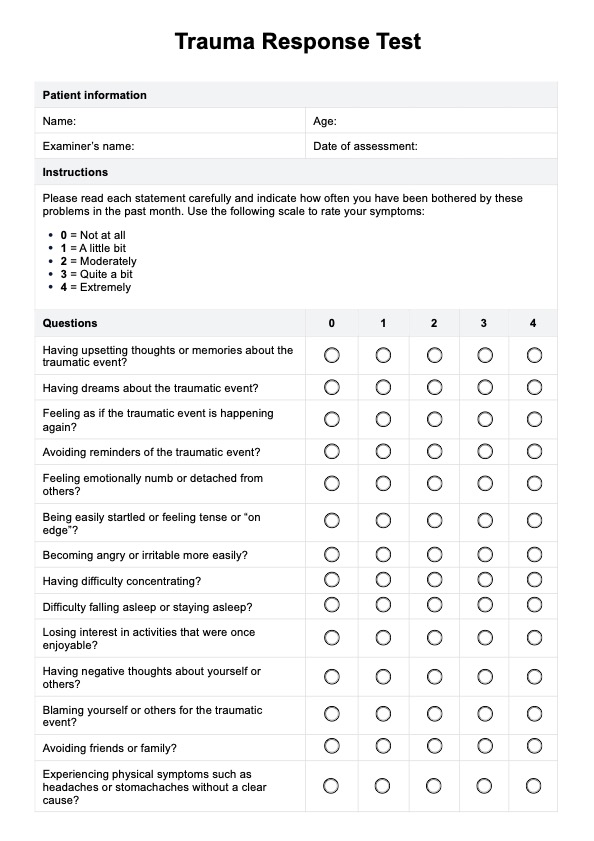The assessment for trauma typically involves using standardized tools like the PCL-5 (Posttraumatic Stress Disorder Checklist for DSM-5) or the CAPS-5 (Clinician-Administered PTSD Scale for DSM-5) to evaluate symptoms and severity of posttraumatic stress disorder (PTSD). These tests consist of structured questions that assess various aspects of trauma exposure and its impact on an individual's mental health.

Trauma Response Test
Assess trauma response with this free PDF download from Carepatron. Understand trauma reactions and get valuable insights.
Trauma Response Test Template
Commonly asked questions
Trauma responses can manifest in various ways, including emotional, cognitive, physical, and behavioral reactions. Common types of trauma responses include emotional distress such as fear, anxiety, guilt, or shame; cognitive distortions like negative beliefs about oneself or the world; physical symptoms such as sleep disturbances, hypervigilance, or somatic complaints; and behavioral changes like avoidance of triggers, social withdrawal, or self-destructive behaviors.
Having a trauma response means that an individual exhibits various emotional, psychological, and physiological reactions as a result of experiencing a traumatic event. Trauma responses can manifest in different ways, depending on the person and the nature of the trauma.
EHR and practice management software
Get started for free
*No credit card required
Free
$0/usd
Unlimited clients
Telehealth
1GB of storage
Client portal text
Automated billing and online payments











